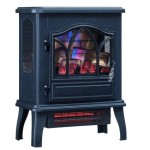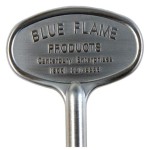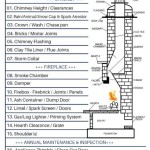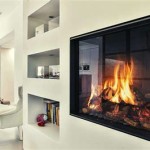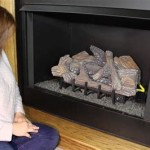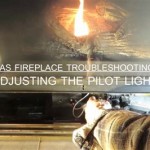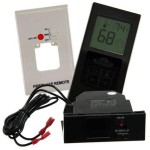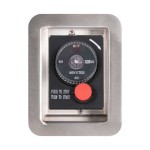Steel Fireplace Mantel: A Modern Hearth Enhancement
The fireplace has long been a focal point of the home, a place for gathering, warmth, and visual appeal. While traditional fireplace designs often incorporate brick, stone, or wood, modern design trends increasingly favor the sleek lines and minimalist aesthetic of steel. A steel fireplace mantel offers a durable, stylish, and customizable option for elevating the hearth and integrating it seamlessly into contemporary living spaces. This article explores the various aspects of steel fireplace mantels, including their benefits, design considerations, installation guidelines, and maintenance requirements.
Steel, particularly when fabricated into a fireplace mantel, presents a compelling alternative to traditional materials. It boasts a unique set of characteristics that contribute to both its aesthetic appeal and functional longevity. The inherent strength of steel allows for designs that are both minimalist and structurally sound, creating a refined and unobstructed look. Furthermore, the material's versatility enables a wide range of finishes, from brushed stainless steel to powder-coated options in various colors, making it adaptable to diverse interior design schemes.
Durability and Longevity
One of the primary advantages of a steel fireplace mantel is its exceptional durability. Unlike wood, which can be susceptible to warping, cracking, or insect infestation, steel is highly resistant to these issues. It can withstand significant temperature fluctuations without compromising its structural integrity, making it an ideal material for the environment surrounding a fireplace. The robust nature of steel ensures that a steel mantel will maintain its appearance and functionality for many years, representing a long-term investment in the home's aesthetic and value.
The resistance to warping and cracking is particularly important near a fireplace, where heat exposure is constant. Wooden mantels can degrade over time, requiring frequent repairs or eventual replacement. Steel, however, maintains its shape and structural integrity, reducing the need for costly maintenance and ensuring a lasting and aesthetically pleasing addition to the fireplace.
Furthermore, steel's resistance to insect infestation eliminates the risk of damage from termites or other wood-boring insects, which can be a significant concern with wooden mantels. This makes steel a more hygienic and low-maintenance option in the long run.
Design Versatility: Styles and Customization
Steel's versatility extends beyond its structural properties to its aesthetic adaptability. It can be fabricated into a wide range of styles, from sleek, minimalist designs to more ornate and decorative options. The material can be laser-cut, welded, and finished to create intricate patterns, geometric shapes, or clean, contemporary lines. This makes steel fireplace mantels suitable for a variety of architectural styles, from modern and industrial to transitional and even subtly traditional.
The availability of various finishes further enhances the design possibilities. Brushed stainless steel provides a modern, industrial look, while powder-coated steel offers a range of color options to match or complement the surrounding decor. Powder coating also provides a durable and scratch-resistant surface, ensuring that the mantel maintains its appearance over time. Different textures, such as hammered or textured finishes, can also be applied to add visual interest and depth.
Customization is also a significant advantage of steel. Unlike pre-fabricated wooden mantels, steel mantels can be custom-designed and fabricated to fit specific fireplace dimensions and design preferences. This allows for a truly unique and personalized hearth, tailored to the individual homeowner's needs and style. Custom design options may include specific dimensions, incorporated shelving, unique cutouts, or integrated lighting elements.
The design flexibility also allows for the incorporation of other materials into the steel mantel. For example, glass, stone, or wood accents can be integrated to create a more complex and visually appealing design. This combination of materials can add warmth and texture to the steel mantel, softening the industrial aesthetic and creating a more inviting atmosphere.
Installation and Safety Considerations
Installing a steel fireplace mantel requires careful planning and attention to safety regulations. Due to the weight and rigidity of steel, professional installation is often recommended, especially for larger or more complex designs. Proper installation is crucial to ensure the mantel is securely mounted and meets all relevant building codes and safety standards.
Prior to installation, it is essential to verify the fireplace's structural integrity and ensure that it can support the weight of the steel mantel. The supporting wall should be properly reinforced if necessary to prevent any risk of collapse or movement. Accurate measurements are also critical to ensure a precise fit and prevent any gaps or misalignment.
Fire safety is paramount when installing a steel fireplace mantel. Adherence to all local building codes and regulations is essential. This includes maintaining adequate clearance between the mantel and the fireplace opening to prevent overheating and ensure proper ventilation. Non-combustible materials should be used for any backing or support structures that come into contact with the fireplace.
Proper anchoring is also critical. Steel mantels are typically attached to the wall using heavy-duty brackets or anchors that are specifically designed for the weight and material. The anchors should be securely fastened to the wall studs or concrete masonry units to provide a stable and reliable support. The specific anchoring method will depend on the wall construction and the size and weight of the mantel.
In some cases, particularly with gas fireplaces, heat shields may be necessary to protect the mantel from excessive heat. Heat shields are typically made of metal and are installed between the fireplace opening and the mantel to deflect heat away from the surface. A qualified fireplace installer can assess the need for a heat shield and recommend the appropriate type and size.
Electrical considerations are important if the mantel design incorporates integrated lighting. All wiring should be done in accordance with local electrical codes by a licensed electrician. The wiring should be properly insulated and protected from heat and moisture to prevent electrical hazards.
Maintenance and Cleaning
Maintaining a steel fireplace mantel is relatively straightforward, thanks to the material's inherent durability and resistance to staining. Regular cleaning will help keep the mantel looking its best and prevent the buildup of dust or soot. The specific cleaning method will depend on the type of finish applied to the steel.
For brushed stainless steel, a mild detergent and water solution is typically sufficient for removing dirt and grime. A soft cloth should be used to avoid scratching the surface. Special stainless steel cleaners can also be used to remove fingerprints or stubborn stains. It is essential to wipe the surface dry after cleaning to prevent water spots.
Powder-coated steel is also easy to clean. A mild detergent and water solution can be used to remove dirt and grime. A soft cloth or sponge should be used to avoid scratching the surface. Avoid using abrasive cleaners or scouring pads, as these can damage the powder coating. It is also important to wipe the surface dry after cleaning.
For heavily soiled surfaces, a stronger cleaning solution may be necessary. However, it is important to test the cleaner in an inconspicuous area first to ensure that it does not damage the finish. Always follow the manufacturer's instructions when using any cleaning products.
Regular dusting is also important to prevent the buildup of dust and soot. A soft cloth or duster can be used to remove dust from the surface of the mantel. A vacuum cleaner with a soft brush attachment can be used to clean hard-to-reach areas.
In some cases, the steel mantel may develop rust or corrosion over time, especially if it is exposed to moisture. To prevent rust, it is important to keep the mantel clean and dry. If rust does occur, it can be removed using a rust remover or a wire brush. After removing the rust, the area should be treated with a rust-inhibiting primer and painted or coated to prevent further corrosion.
Minor scratches and blemishes can often be repaired using touch-up paint or a steel polishing compound. Follow the manufacturer's instructions for applying these products and always test them in an inconspicuous area first to ensure that they match the existing finish.
By following these maintenance and cleaning guidelines, a steel fireplace mantel can maintain its beauty and functionality for many years, providing a stylish and durable addition to the home.

Steel Fireplace Mantel Shelf You Can Customize To Preference

Mantels Direct 68 In W X 2 5 H 12 D Black Metal Contemporary Fireplace Mantel The Department At Com

Chesapeake Old World Banding Steel Fireplace Mantel Shelf

Modern Fireplace Mantel Shelf In Brushed Stainless Steel

Choosing A Fireplace Mantel Which Look Is Right For You

Steel Mantel Shelf Is Noncombustible

Shelves Mantels Stoll Industries

Metal Glass Mantels Shelves Main Street Fireplace Fall

Custom Fireplace Mantels Napolis Godby Hearth And Home

Mantel Shelf Bracket Sold Individually Fireplace Decor Rustic Farmhouse Industrial

